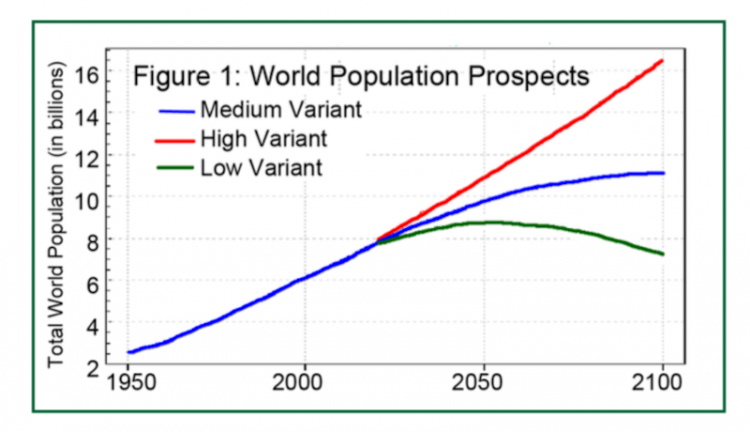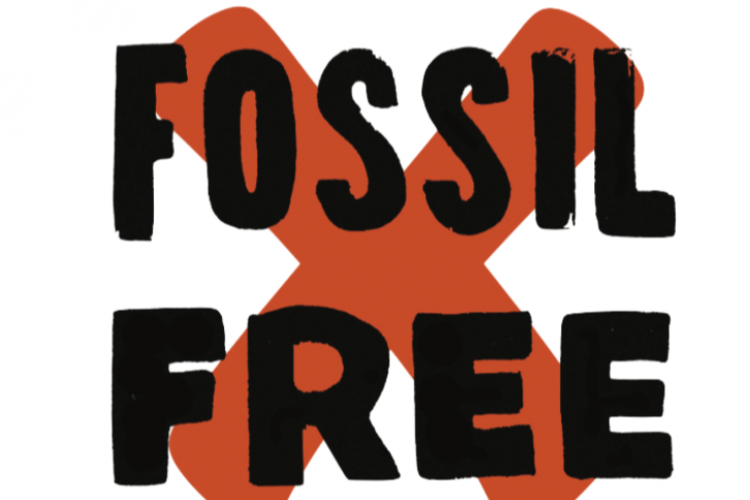Friends Witness on Population

This article was created by QEW’s Population Working Group and is part of our “Pamphlets for Sharing” series, reflections on important topics researched, written, and edited using Quaker discernment and decision-making. We hope you use them as an educational tool with your community.
“[Humankind] is … faced with a hideous problem in terms of sheer arithmetic…. [A]ny positive rate of growth whatever eventually carries a human population to an unacceptable magnitude.” – Kenneth E. Boulding, 1964, The Meaning of the 20th Century: The Great Transition.)
In 1650, when George Fox was alive, the world’s population was about one-half billion people; by the early 20th century it had reached two billion.
In 2017, it reached 7.6 billion, more than a tripling in a century. Currently, more than 83 million per- sons are being added to Earth each year. While the world’s rate of population growth has been slowly declining since about 1965, the prospects for the future suggest considerable additional population growth.
Even with possible modest declines in fertility, according to the medium projection of the United Nations, the world would reach around 11 billion in 2100, about 3.6 billion more than our crowded world today (Figure 1). These projections show possible future population under different assumptions and are not predictions of what the future population will actually be. All of these assume no major catastrophic events, such as droughts and floods leading to famines or civil strife due to climate change, a major world-wide pandemic, or war that would significantly increase mortality (United Nations). Ecological constraints, which are quite likely, are not taken into consideration.
Impact of Population on Everything
Increasing numbers of people on Earth will need to be fed, using increasingly scarce water and other resources, and contributing to the pollution of the atmosphere, land, and water. We are reaching the limits of arable land, degrading Earth’s soils, and cutting down forests to grow more crops. More people (along with more demand) drive our search for oil, gas, and coal from places farther away, creating even more environmental problems.
Because of population growth, humans have crowded and outcompeted other species; Earth’s biodiversity has declined alarmingly. The number of vertebrate animals declined by half between 1970 and 2010. The Ecological Footprint shows that humankind has exceeded Earth’s biocapacity by more than 50 percent—leaving inadequate resources for nonhuman species. Human activities have exceeded sustainable boundaries (World Wildlife Fund International).
Population growth is an important concern for both rich and poor countries. Richer countries consume more resources per capita while poorer countries often have fewer environmental controls and infrastructure, increasing their negative impact. Stopping or reversing population growth would help in both cases.

Population and Insecurity
Particularly in rapidly growing, low income countries, civil unrest and conflict threaten civilians and stability. A growing number of youth, due to past high birth rates, cannot find jobs. Food shortages result from climate-induced drought or floods. And people migrate from rural areas to expanding cities. All of these produce conditions for continued poverty and unrest.
Conflict over scarce water, land, and energy is more likely with population growth. Most countries with severe and protracted food insecurity have rapidly growing populations, threatening to make food insecurity worse (Bixby).
Population and Climate Change
In many complicated ways, population growth contributes to climate change—beyond the simple effect of more people. More people create more sprawl with more traffic to farther distances, put more pressure to extract gas, oil, and coal in difficult situations with more pollution, and encourage intensified industrial agriculture with higher use of oil-based products and greater emission of methane gas from the resulting larger number of livestock. Additional population leads to cutting down previously untouched forests and depletes aquifers in the ground, using even more energy and creating more carbon pollution.
While the relationship is inexact, continued population growth exacerbates the intensity of cli- mate change. If women worldwide had on average half a child below what is expected (the medium UN Projection), the world could reduce its carbon emissions by approximately two billion tons of carbon per year by 2050 or 23 percent of today’s emissions (O’Neill).
Population and Reproductive Rights
Achieving lower rates of population growth and ultimately a smaller population on Earth would be enhanced by equal opportunities for all women. Where women and girls have more edu- cation, opportunity, and choice, fertility is lower. Currently many pregnancies are unintended, in developing countries about 40 percent (Bixby), and in the United States around 50 percent (Guttmacher).
Many women around the world do not have easy and inexpensive access to contraception to allow them to achieve only the number of children they want. When safe and effective family planning services (contraception and health care) are available to all, experience shows that aver- age family size falls, pregnancies occur at more optimal times in women’s lives, and mothers and children are healthier and more able to contribute (Worldwatch). Nevertheless, even with readily available and carefully used contraception, legal and safe abortion is necessary for couples to achieve the number of children they want.
Questions
- What would the world be like if population reaches 11 billion people? If population could be stabilized at a level closer to the current 7 billion?
- How can we limit population to what Earth can support? Where is the line between (dis)incentives and coercion?
- To what extent is family planning a women’s issue? How can men participate more responsibly?
- Does support for population stabilization encourage abortion? Since effective contraception can prevent most unwanted pregnancies and thus reduce the need for families to con- sider having an abortion, should Friends sup- port the availability of safe abortion services?
- What is the spiritual basis of our desire to reproduce? How do we relate this to responsibility for the fate of Earth?
- What approaches have we found to address population problems that are consistent with the religious outlook and social concerns of Friends?
- How are reducing excess consumption in richer countries and limiting population growth every- where both vital to the future?
What Can Friends Do?
Quaker Earthcare Witness supports the following changes in order that population may be stabilized and brought into harmony with the Earth community:
- Provide adequate funding for family planning services to the millions of women worldwide who want to limit their fertility but lack access.
- Raise the status of women and improve education for women and men—both keys to changed attitudes and motivations regarding family size.
- Shift from the idea that everyone needs to have biological children by encouraging adoption, while recognizing the sacredness of
parenthood. Support those who choose adoption, community living with shared child-rearing, small families, or celibacy. - Contribute to the Pop Offsets program of Quaker Earthcare Witness which collects donations and then gives the money to organizations that direct it toward family planning.
Other Resources
Bixby Center for Global Reproductive Health (University of California, San Francisco), 2015. By Slowing Population Growth, Family Planning can Help Address Food Insecurity and Climate Change bixbycenter.ucsf.edu/sites/bixbycenter.ucsf.edu/files/PFC_Feb_3_2015.pdf
Guttmacher Institute, 2009-2019. Several publications on unintended births, abortion, and contraception guttmacher.org.
O’Neill, Brian, et al, 2012. Demographic Change and Carbon Emissions, The Lancet, Vol. 380, July 14 thelancet.com/journals/lancet/article/PIIS0140-6736%2812%2960958-1/fulltext
Population Reference Bureau, 2018. World Population Data Sheet. prb.org/2018-world-population-data-sheet-with-focus-on-changing-age-structures
United Nations, Department of Economic and Social A airs, Population Division (2017). World Population Prospects: The 2017 Revision, Key Findings and Advance Tables. ESA/P/ WP/248 <population.un.org/wpp/Publications>.
Worldwatch Institute, 2014. Making the Connection: Population Dynamics and Climate Compatible Development <worldwatch.org/making-connection-population-dynamics-and-climate-compatible-development-0>.
World Wildlife Fund International, 2014. Living Planet Report 2014: Species and Spaces, People and Places.


